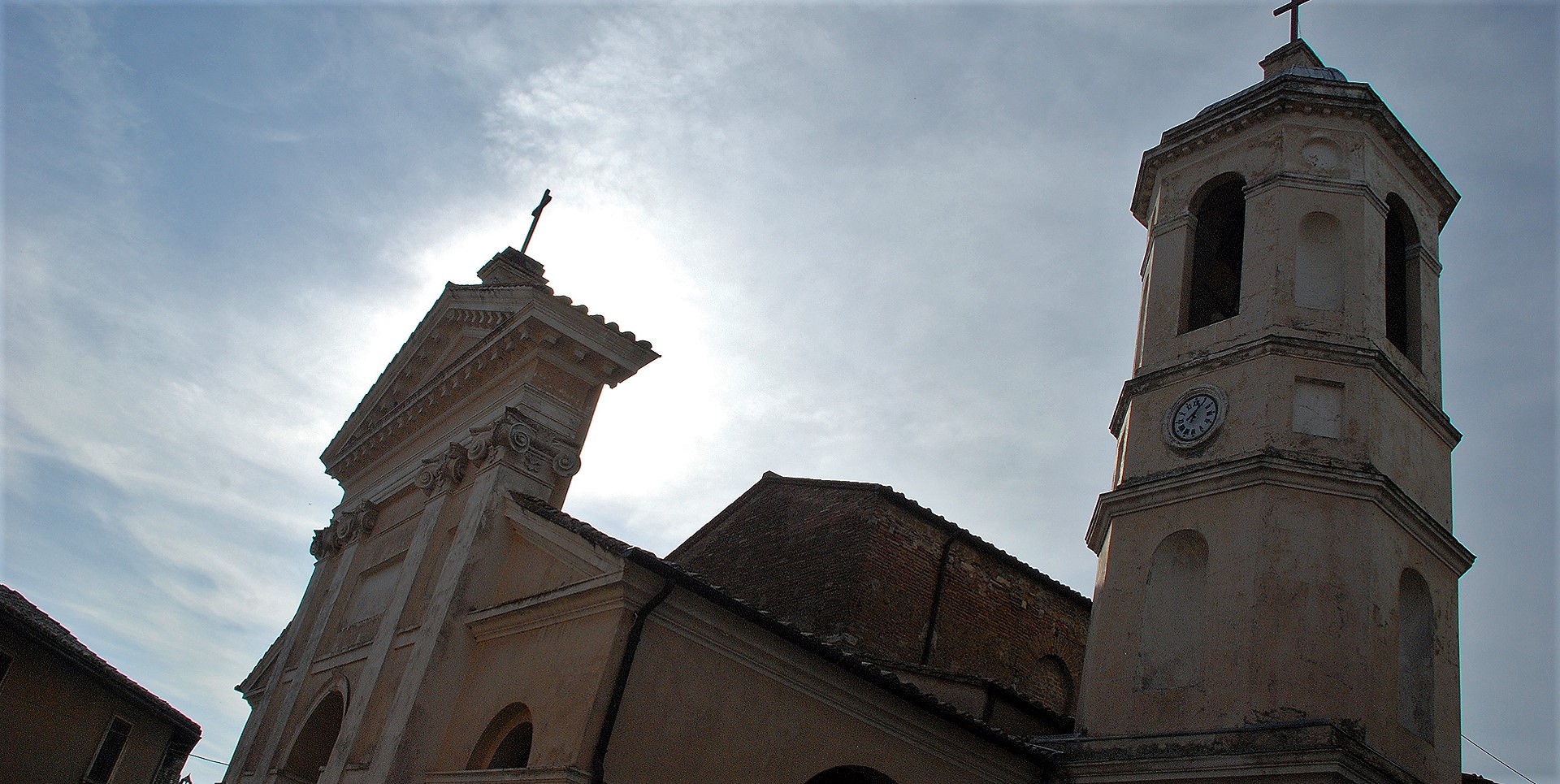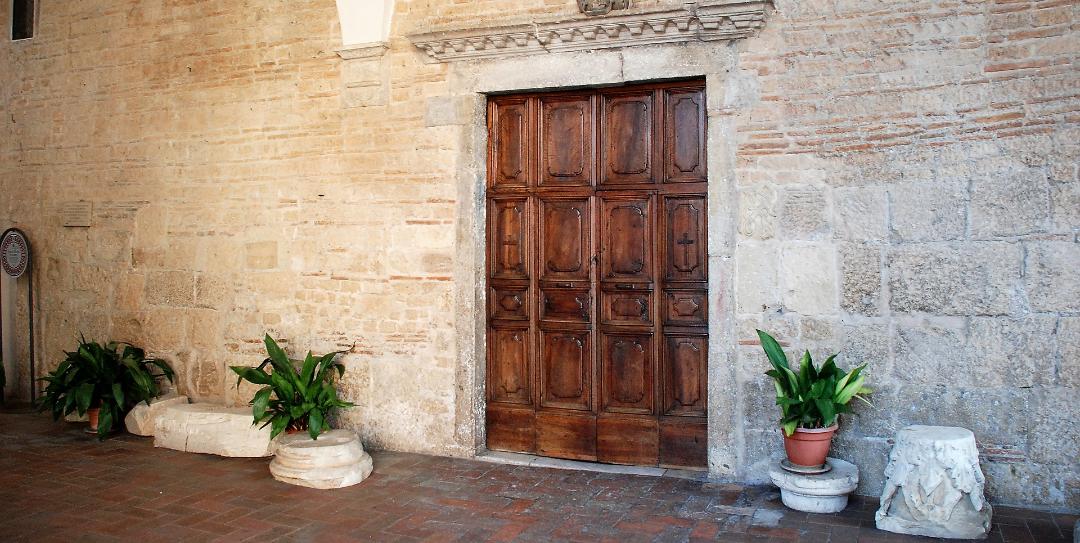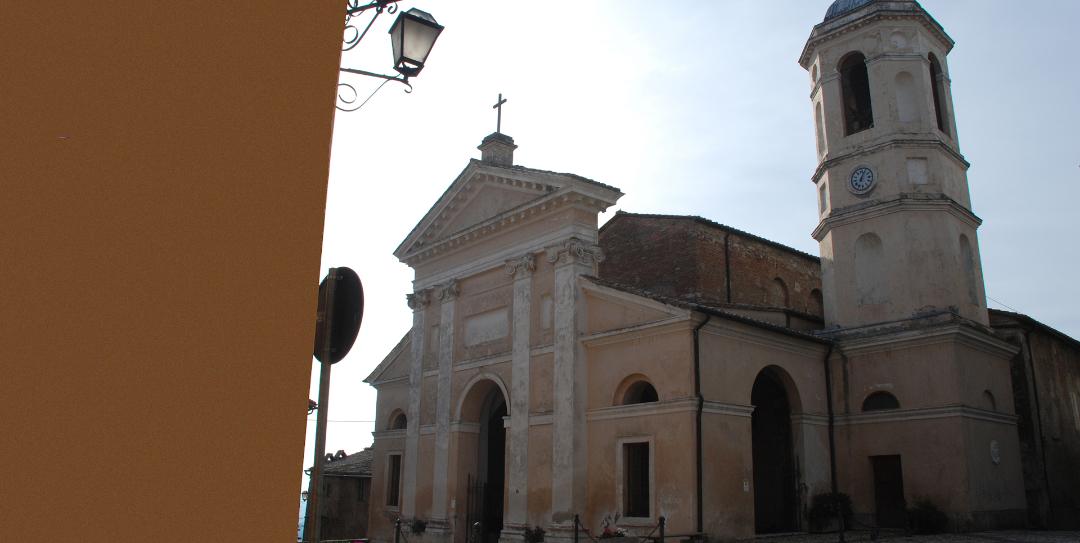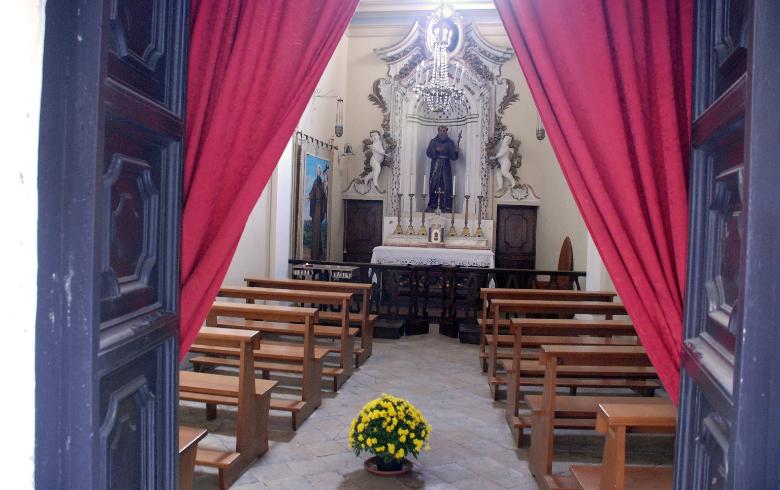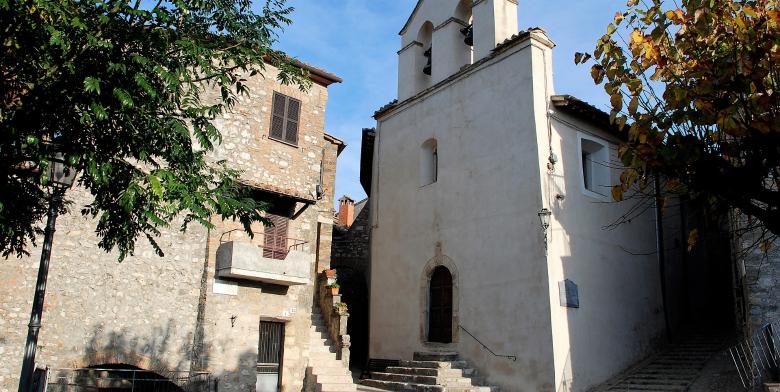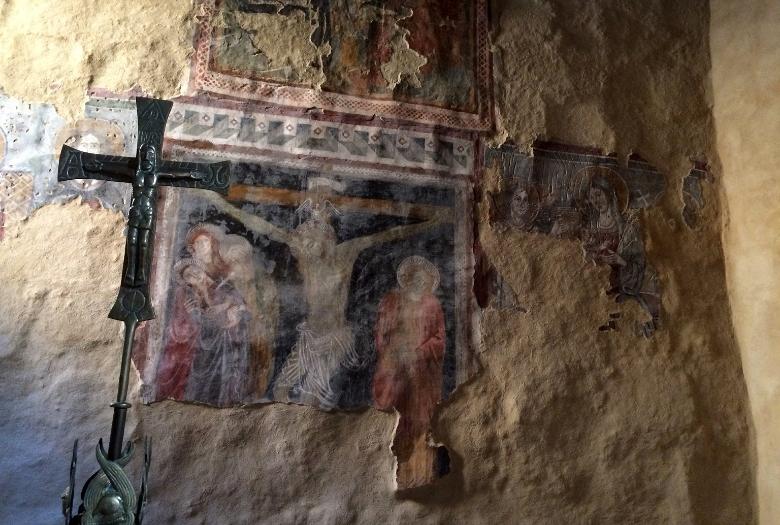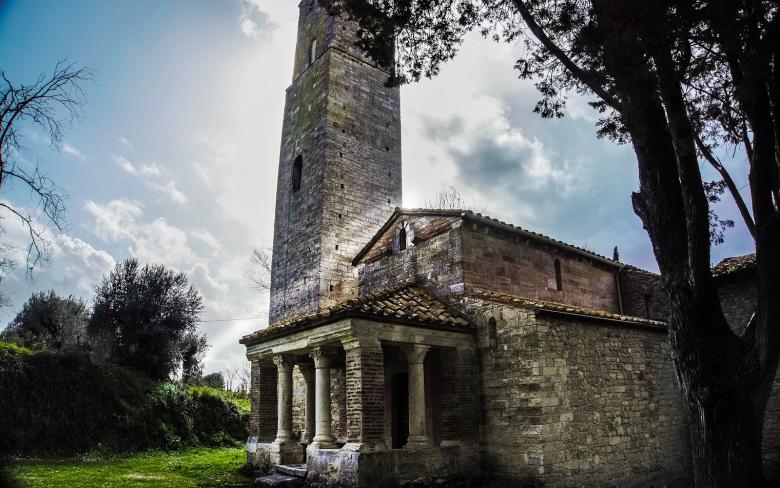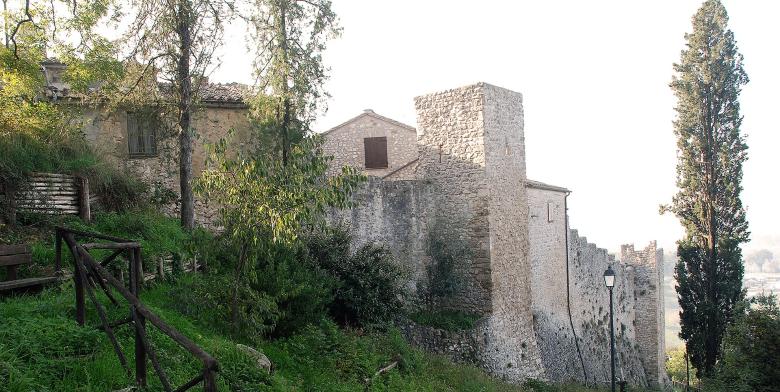Above, in the centre of the apse wall, there is an artistic and imposing stained-glass window (the work of the contemporary Otricolan painter Roberto Maurini) under which there is a valuable horseshoe-shaped wooden choir decorated with inlays dating back to the 1400s.
The high altar of the Umbrian school (12th-13th century) is characterized by a beautiful marble ciborium of the 1500s whose columns are made of recovered material of Roman origin; at the foot of the altar is the
Fenestrella Confessiones.
On either side of the central nave there are two minor aisles with four Baroque chapels and a minor chapel, in the left aisle.
The right aisle has two recently restored Baroque chapels (dedicated respectively to St. Fulgenzio and St. Domenico) and a baptistery. Of particular artistic importance is a wooden wardrobe with embossed emblems, in fake gilded marble of 1717 (present in the chapel of St. Fulgenzio) and a fresco (depicting St. Fulgenzio bishop distributing bread to the poor of Otricoli) in the nearby chapel of St. Domenico.
Opposite the right aisle there is the marble baptismal font of the 16th century, and on the right wall of which there is a gothic marble Eucharistic tabernacle with wooden door.
The left aisle has two Baroque chapels, a small chapel dedicated to St. Anthony the Abbot and a "passage chapel" of Our Lady of Sorrows; in the Chapel of Our Lady of Sorrows, formerly of St. Lucia then of the Holy Crucifix, of particular importance are the frescoes, of the first half of the sixteenth century, and the dove of the Holy Spirit in polychrome stucco, recently brought to light.
The Chapel of the Blessed Sacrament, of Gothic origin, is a small copy of the ancient chapel of the Blessed Sacrament in the Vatican by Carlo Maderno; the dome vault with skylight is frescoed with the Vision of St. John in Patos, the Angel of Fire. The second main chapel, instead, decorated in the 17th century, has a reliquary altar and 16 frescoes finely decorated with stucco and pure gold frames depicting the mysteries of the Holy Rosary and some episodes from the life of the Virgin.
[Source: www.otricoliturismo.it]
























